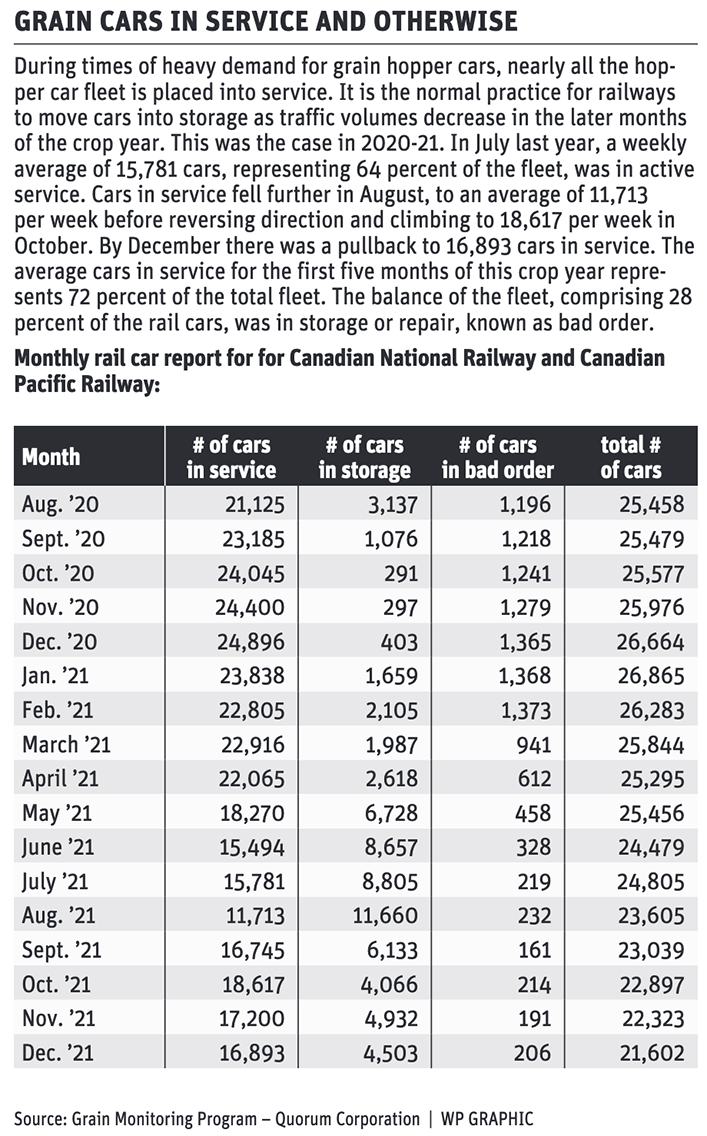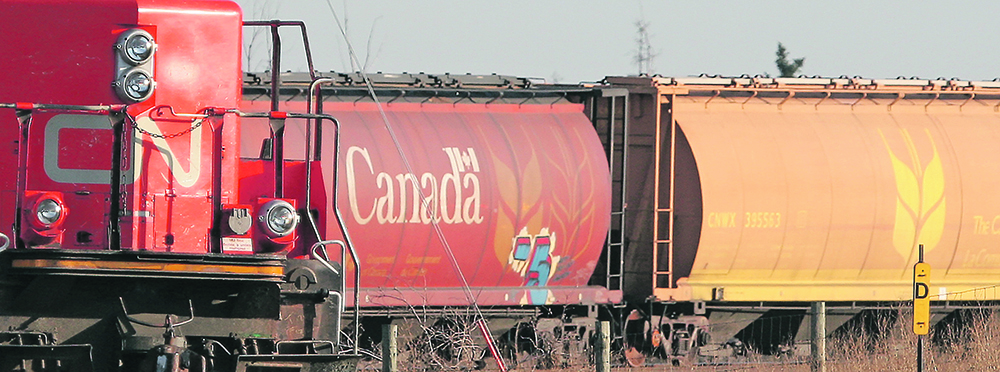Rail cars sitting sidelined draw interest from producers and industry watchers, but for different reasons
The Western Producer receives calls weekly from readers curious to know why the prairie provinces have what seems to be an un-precedented number of idle rail cars setting on sidings.
Prairie sidings seem to be hosting a lineup of grain hoppers, coal hoppers, potash cars, tankers, reefers, flat beds and even some of those old contraptions called box cars. Not creating a problem. Just parked.
Back in the days when car allocation was ruled by the CWB railcar czar it was easy to make one phone call and get a tonne of data. But today, according to transportation guru Barry Prentice, there are nearly as many answers to the question as there are idle rail cars.
“Rail cars only move when they have something to move. Rail car movement and storage is seasonal. That’s why we see miles and miles of hopper cars sitting on sidings in the summer. The 2021 crop was down 40 percent and there was very little to haul. The cars owners let them sit idle,” said Prentice in a phone interview.
Prentice said the seasonality factor applies to grain cars, potash cars, tankers, coal cars and a list of other rail cars designated for certain commodities. Prentice, former director of the Transportation Institute, is now a professor of supply chain management at the Asper School of Business at the University of Manitoba. Studying rail cars is part of his job.
“Many of those cars are not owned by the railways themselves. They belong to other companies who need them to move their special products. The major railways are happy to move private cars in season, but when the season is over, they don’t want them sitting around cluttering up their tracks. If you don’t find a parking lot for your empty car pretty quick, then the railway turns on the parking meter, and that’s expensive.”
Prentice said this happens with canola oil cars, which are owned by crushers. If they don’t have enough storage capacity at the plant, then they rent cheap storage someplace else, such as in a dedicated canola car parked on a siding.
“The railways don’t own the petroleum cars we see moving crude oil around. They only own enough tankers to meet the needs of their own locomotives. The other petroleum cars we see are owned by leasing companies who lease them out.
“Same deal with reefers. They’re owned by private companies. If something like COVID comes along to cut into total meat consumption, then fewer reefers are needed. For the meat shippers, it’s cheaper to move product in a refrigerated rail car than in a refrigerated container. However, at both ends, they have to pay to load and unload the railcar. We still see boxcars, but certainly not as many as years ago. They’re on the way out because they’re so awkward to load and unload. But there are still uses for them. I see them hauling scrap paper and newsprint.

“Many of the idle cars are waiting to be cut up and re-cycled. This is the ultimate fate of every rail car ever built. Metal fatigue and inability to pass safety inspections will seal the fate of every car. Rail cars are one of the best environmental recycling examples we have today.
“Over 90 percent of all iron and steel we use gets recycled. Even when they demolish a building or rip up street for re-construction, all the rebar is carefully sorted out to be melted down. Rusty iron and steel is actually beneficial in the smelting process. Rust is iron oxide. That oxygen combines with the sulfur. You want to remove sulfur because it weakens the new metal. Those rusty rail cars serve a purpose.”
Canadian National and Canadian Pacific were not very talkative when approached for an interview.
CP replied in an email saying only, “CP uses its infrastructure, including tracks, for rail car (all types) storage when necessary.”
The CN reply was wordier. “Rail cars, whether they belong to the railroad or (as is often the case) belong to our customers, are stored when not in use. Every car must be inspected before returning into service.”
















